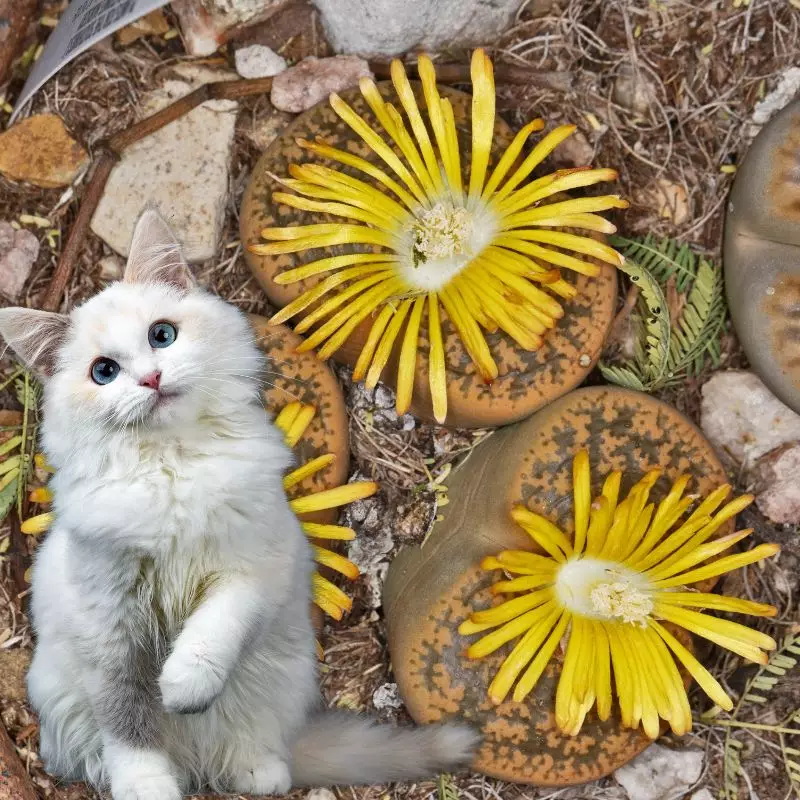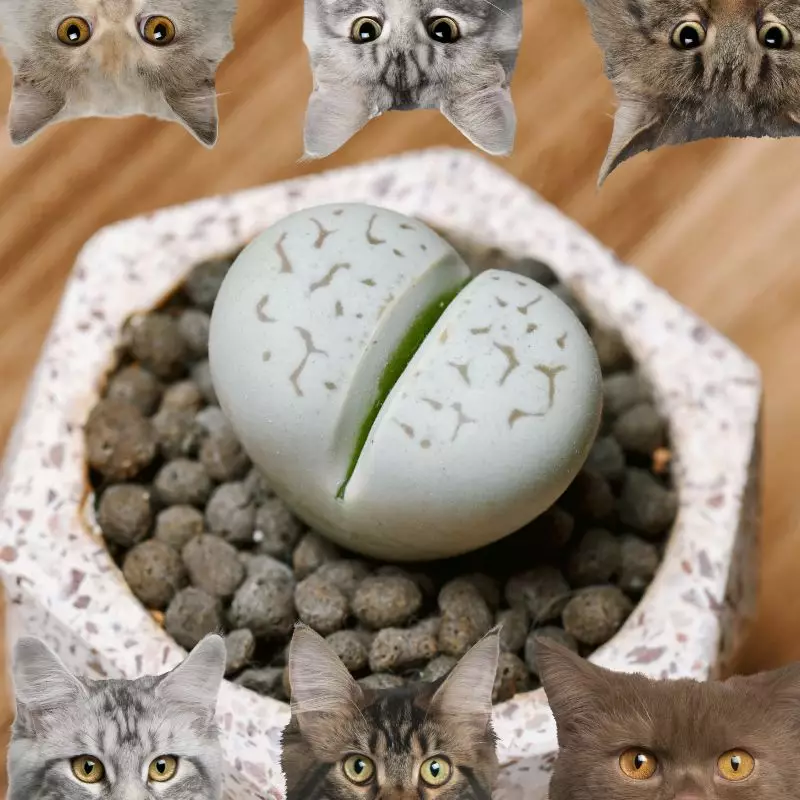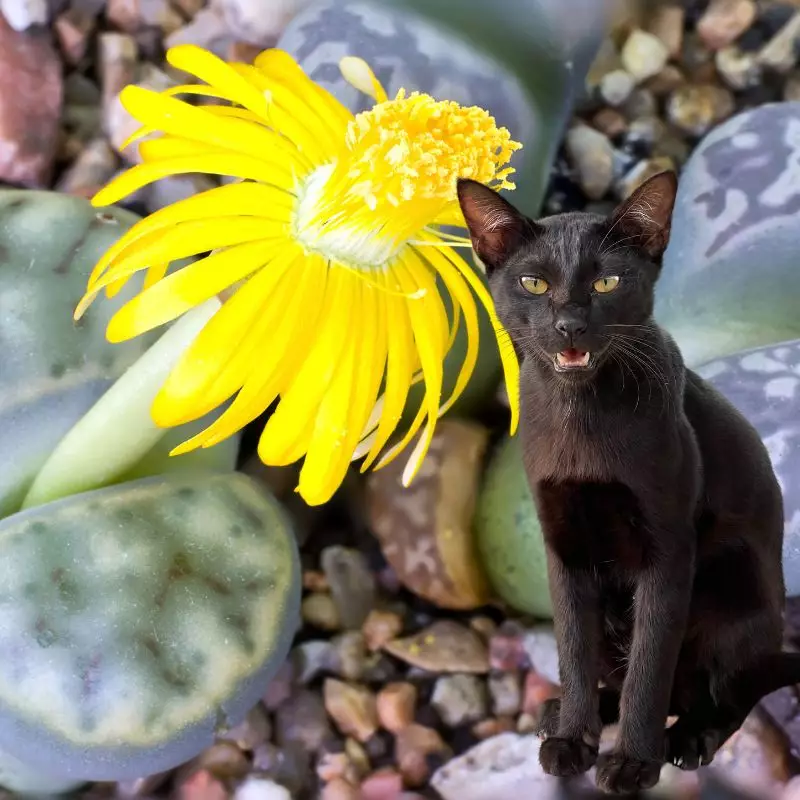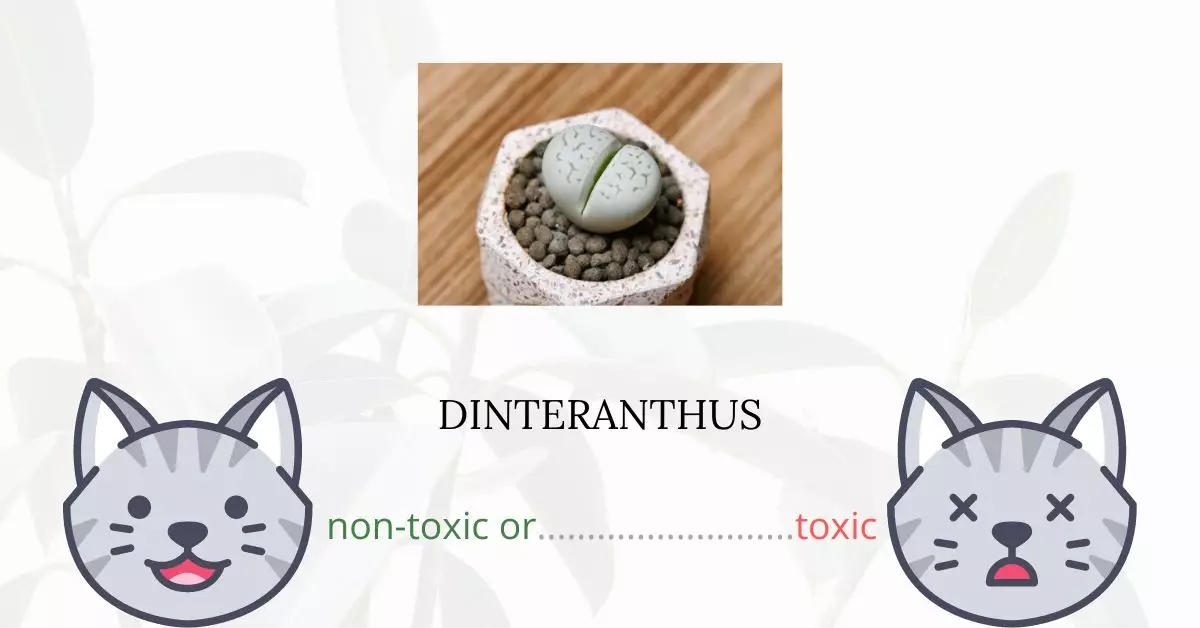Dinteranthus is generally considered non-toxic to cats. According to the American Society for the Prevention of Cruelty to Animals (ASPCA), this plant is recognized as non-harmful for cats, dogs, and horses. While physical contact with Dinteranthus is generally safe, ingestion may present a different scenario.
In this article, written in collaboration with a team of experienced DVMs (doctors of veterinary medicine), we delve deeper into the potential risks associated with Dinteranthus when consumed by cats. Drawing from high-authority sources such as ASPCA and PetMD, we aim to provide accurate and up-to-date information concerning this and other plants and their potential effects on our feline friends.
Can Cats Eat Dinteranthus?

The short answer is yes. Cats can eat Ditherantus without you having to worry about negative consequences. Dinteranthus does not have toxic elements that can be harmful to our feline companions.
But, always remember that cats are obligate carnivores and plants are not part of their usual diet. If they have eaten excessive amounts of plant material, this may cause them to have an upset stomach and suffer from vomiting or diarrhea.
Another thing to remember is that using chemicals on your plants can also affect your fur babies. In case your cat has inhaled or ingested chemical residues from your houseplants, it can result in poisoning which can be even lethal.
What is Dinteranthus?

Dintheranthus is a group of stemless succulent plants native to South Africa’s Cape Province. One of its species is Dinteranthus vanzylii.
Dinteranthus vanzylii is a fascinating solitary or clumping plant with appealing bodies and flowers that resemble Lithops in shape and color but have no discernible dormant period. Its sunken growth shape is thought to be a development similar to that of Lithops. It is unquestionably interesting because to its similarity to a rock, which is why it is also known as “living stone.”
It is a small succulent with paired chalky white or grayish leaves that have irregular red or brownish patterns and spots. It may reach a height of 1.6 inches and can grow alone or in clumps. The foliage is robust and luscious. The blossom is brilliant yellow and develops in mid-fall from a crack between the leaves.
Keeping Cats Away From Dinteranthus

To keep your cats away from your succulent collection and other lovely plants, it is best to put them on a high place like a shelf or in a room that your cat never visits.
You can also try other methods like using aluminum foil to deter your cats. Wrap your plant pots with aluminum foil or place it on the ground near your plants. Cats hate the crinkly texture and odor of aluminum foil so once they feel it, they tend to back off.
Still, the most ideal way to deal with this dilemma is to teach your cats to stay away from plants. Once your cats learn this, you will be relieved from keeping an eye on them every moment. Not to mention that your plants will thank you too!
Plants to Avoid For Your Cats
If you are a cat owner and unsure if the plants growing in your yard are harmful to your cats, check out this list of toxic plants for cats. You can also check our list of non-toxic plants for cats.





